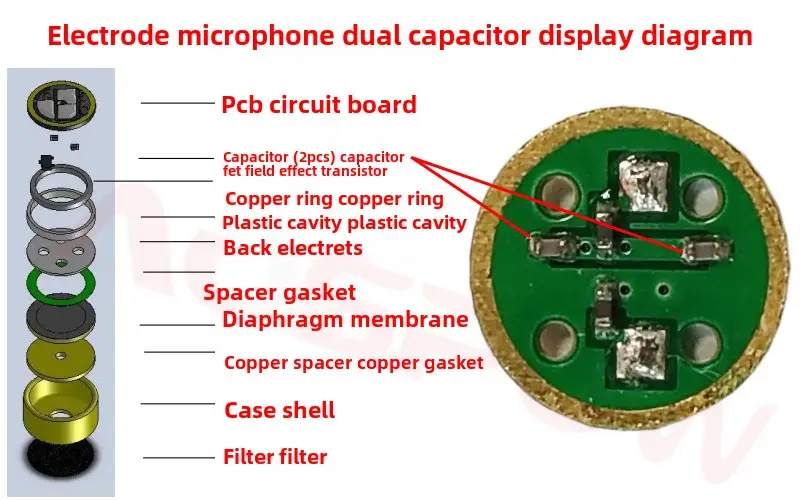
There are significant differences in the design of single capacitor and double capacitor in the polarizer microphone, including structural differences, working principles, performance characteristics, and application scenarios.
1、 Structural differences
Single capacitor design: An internal capacitor is used in the electret microphone to capture sound signals.
This capacitor consists of a diaphragm, a gasket, and a plate, with an polarizer material on the diaphragm that can store charges.
Dual capacitor design: The electret microphone head contains two capacitors inside.
These two capacitors may be arranged and connected in different ways to achieve more complex sound capture and signal processing functions.
2、 Working principle
Single capacitor design: When sound waves act on the diaphragm, the diaphragm vibrates and changes the distance between it and the electrode plate, thereby altering the capacitance value of the capacitor.
Due to the constant amount of charge stored on the material of the polarizer, changes in capacitance can cause variations in the voltage across the capacitor, resulting in an alternating voltage signal.
After being amplified by a field-effect transistor, the signal is output as a sound signal.
Dual capacitor design: Dual capacitor design may utilize the interaction or differential signal between two capacitors to enhance the ability to capture and process sound signals.
For example, one capacitor may be used to capture forward sound wave signals, while another capacitor is used to capture reverse sound wave signals, thereby achieving differential amplification and noise suppression.
Alternatively, two capacitors may be connected in parallel or series in some way to alter the frequency response and sensitivity of the microphone.
3、 Performance characteristics
Single capacitor design: typically has a simpler circuit structure and lower cost.
Suitable for occasions where sound signal requirements are not particularly high, such as general voice calls, recording, etc.
Dual capacitor design: may have more complex circuit structures and higher costs.
Suitable for occasions with high requirements for sound signals, such as professional recording, music performance, etc.
The dual capacitor design may provide a wider frequency response range, higher sensitivity, and lower noise levels.
4、 Application scenarios
Single capacitor design: commonly used in telephone receivers, toy microphones, small recording devices, etc.
Dual capacitor design: commonly used in professional recording equipment, music performance microphones, stage performance microphones, etc.

